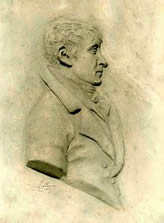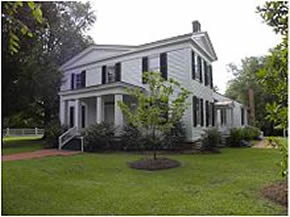
Mission Statement:
"To advance through research, education and symposia, an increased public awareness of the Cape Fear region's unique history."

Colonel Thomas S. Kenan
Duplin Patriot, Legislator and Lawyer
Cape Fear Historical Institute Papers
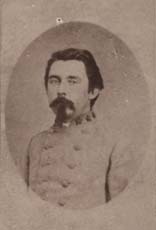
Colonel Thomas S. Kenan
Thomas Stephen Kenan was the oldest son of Owen Rand
(1804-1887) and Sarah Rebecca (Graham) (1817-1871)
Kenan, born in Duplin county on 12 February 1838.
Owen was the oldest son of Thomas (1771-1843)
and Mary Rand Kenan (1781-1856), who left an
economically-depressed Duplin in 1833 with their
four youngest children for a new life in Selma,
Alabama; Owen chose to remain in Duplin.
Ancestry
Owen’s grandfather was Revolutionary War
General James Kenan (1740-1810) who commanded
the Wilmington militia district. His public career began
as sheriff of Duplin County, and he led angry Duplin
County residents to Wilmington in 1765 to protest the
Stamp Act of the British. James served in colonial
North Carolina’s general assembly as well as the
provincial Congress, and was chairman of the
Duplin and Wilmington Safety Committees that
anticipated an invasion of British troops.
James also served as a member of North Carolina’s
constitutional convention in 1788 which refused to
ratify the proposed constitution as a substitute for
the Articles of Confederation; and served again in 1789
to ratify the constitution after the Bill of Rights was inserted.
He was also a founding trustee of the University of
North Carolina. He died in 1810 after serving nine
consecutive terms in the State Senate, and the town
of Kenansville in Duplin County was
named in his honor in 1818.
Owen’s father Thomas represented Duplin County
in both houses of the State legislature, served
three terms in the US Congress, and was proprietor
of Lockland (Lochlin) Plantation with fifty African
slaves in southern Duplin. Owen emulated his forbear’s
political leadership and himself served in the State
legislature, 1834-1836. Wife Sarah was the daughter
of prominent Duplin planter-physician Dr. Stephen
Graham and inherited money, property and slaves from
her father. Owen’s daily work involved operating
both the Lockland and Graham plantations and
supervising his laborers, many being leased
to construct the new Wilmington & Weldon
Railroad which brought prosperity
to eastern North Carolina.
Owen and Sarah’s relative wealth enabled them to
buy or construct what has become today’s Greek
Revival-inspired Liberty Hall, named for a previous
Kenan plantation. All four of their children were born
in the house: Thomas S. in 1838; James in 1839;
Annie in 1843; and
William Rand “Buck” Kenan in 1845.
Early Life and Education:
Thomas was educated at private academies in
Duplin County as his brothers and sister would be,
was sent to the Central Military Academy at Selma,
Alabama for one year, then to Wake Forest College,
and three years at the University of North Carolina
in Chapel Hill.
He graduated from the latter in the spring of 1857, studied
law at Richmond Hill, North Carolina for three years,
and established a law practice in Kenansville in 1860.
His father Owen remained politically active in Duplin,
and was elected to represent the district in
the Confederate States Congress in Richmond.
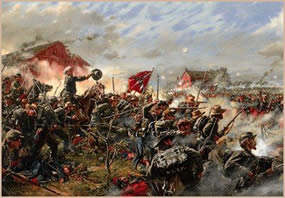
Wartime Service:
North Carolina was the last to leave the union with
the Northern States, ratifying its Ordinance of Secession
on May 20, 1861, the same date as the Mecklenburg
Declaration of Independence. The State’s withdrawal
was a foregone conclusion after Governor Ellis had
replied to the US Secretary of War’s request for
North Carolina troops to invade South Carolina:
“I regard the levy of troops made by the administration
for the purpose of subjugating the States of the South
as in violation of the Constitution and a gross usurpation
of power. I can be no party to this wicked violation
of the laws of the country, and to this war upon the
liberties of a free people. You can get no
troops from North Carolina.”
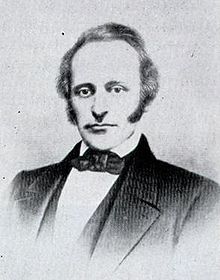
Governor John W. Ellis
North Carolina Unionists had helped keep the State
from seceding through early April, but Lincoln‘s call
for troops after Fort Sumter converted them to
secessionists. Also, Lincoln had already declared
war against the State by blockading North Carolina
ports before the Ordinance was ratified on May 20th.
Thomas had already been commanding the Duplin Rifles
military company with brother James G. on the roster.
The company was accepted for six months State service
on 15 April 1861 and assigned to the Twelfth Regiment,
North Carolina Troops (Second Regiment, NC Volunteers);
accepted into Confederate States service on 18 May 1861;
then mustered in as “Captain Thomas S. Kenan’s
Company of Light Infantry on 18 November 1861
and designated Company C of the Twelfth Regiment.
Captain Kenan’s lieutenants were William A. Allen,
John W. Hinson and Thomas S. Watson.
Other North Carolinians serving with Capt. Kenan and
his Duplin men in the Twelfth Regiment were the
Catawba Rifles, Townesville (Granville) Guards,
Warren Rifles, Lumberton Guards, Granville Greys,
Cleveland Guards, Warren Guards, Halifax Light
Infantry, and the Nash (County) Boys.
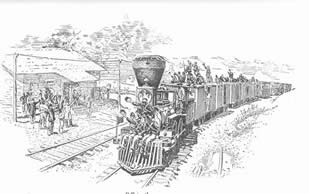
Captain Kenan and his men accompanied the Twelfth
Regiment to Richmond in late May 1861, and moved to
Camp Arrington, Sewell’s Point, that November for
winter quarters and becoming part of General William
Mahone’s Brigade. On 18 November Company C was
mustered out and most re-enlisted into Company A,
Forty-third North Carolina Regiment. This new regiment
was comprised of men from Duplin, Mecklenburg, Union,
Wilson, Halifax, Warren and Anson counties.
The Forty-third Regiment was organized near Raleigh and
mustered into State service in March 1862 for three years
service or the duration of the war. Elected colonel was
Junius Daniel of Halifax, and Thomas S. Kenan elected
lieutenant-colonel.
The regiment was first ordered to Wilmington, then to
Fort Johnston under the command of General Samuel G.
French, Cape Fear District commander. With the threat
of Northern invasion again in May 1862, the Forty-third
Regiment was sent to Richmond near Drewry’s Bluff
on the James River.
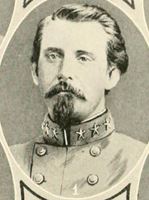
After Daniel’s promotion to brigadier, Kenan was elevated
to colonel of the Forty-third Regiment; brother James G.
Kenan became captain of Company A (with Lieutenant
Stephen D. Farrior next in command) and younger brother
William Rand Kenan was appointed regimental Sergeant-Major.
The regiment was involved in engagements near Malvern Hill
and Drewry’s Bluff, then returned to North Carolina when
enemy advances from occupied New Bern threatened in
late 1862. Col. Kenan’s regiment remained at Kinston
in the spring of 1863 with action at Little Washington;
it returned to Virginia in June to become part of
Gen. Ewell’s Corps, Rodes Division in Lee’s Army
of Northern Virginia. There it prepared for
General Robert E. Lee’s Pennsylvania Campaign.
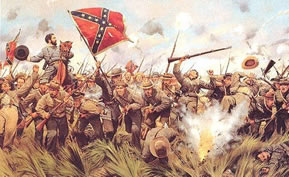
Gettysburg and Johnson’s Island
Colonel Kenan’s regiment saw brisk action at Gettysburg’s
Seminary Ridge and on the third day, at Culp’s Hill, where
Kenan received a severe leg wound and was incapacitated.
The regimental command was assumed by Lt-Col.
William Gaston Lewis of Rocky Mount.
During the after-battle lull Col. Kenan was captured by
the enemy as hospital wagons left Gettysburg; brother Captain
James G. Kenan was also captured. Thomas was sent to
Northern army hospitals in Maryland and then transferred
to the Johnson’s Island prison camp near Sandusky, Ohio.
His brother James ended up there as well.
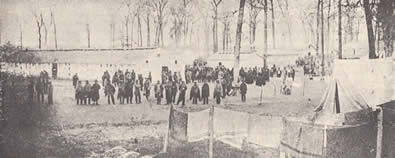
For thirteen months “Their sufferings here during the winter
were very severe, with cruel guards, insufficient food, scanty
clothing, in houses neither ceiled or plastered, and with but one
stove for about sixty prisoners” (Sprunt, pg. 345). The search
for rats to consume for rations was an everyday occurrence,
and while there the Kenan brothers saw Lt. James I. Metts
of Wilmington “selected as one of the most enfeebled and
delicate of the prisoners” picked for exchange for a
Northern prisoner.
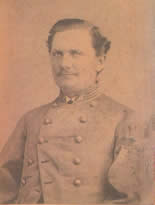
Lieutenant Metts
Author Michael D. Hayes writes of Johnson’s Island in his
“Prison-Pens of the North” that “The prisoners endured harsh
winters, food and fuel shortages, and disease. Research indicates
that close to 300 prisoners died on the island during the war.”
Captain E.D. Patterson of the Ninth Alabama Regiment,
confined with Kenan at Johnson’s Island recalled:
“No one who passed through the year 1864 in prison
there has forgotten, or ever will forget, the awful
suffering there – from cold and from hunger. I used to
[wonder how Northerners who hated the South so]
could look upon prison life and see men staggering about,
weak and hollow-eyed from hunger, searching in vain
in the slop barrels for scraps, and eating rats, to keep
soul and body together, [that] they would
have been satisfied”
(Confederate Veteran, Oct. 1900, pg. 443).
Though Northern prisons were surrounded by plentiful food
and medicines, they experienced a higher death rate among
prisoners than their Southern counterparts, which were surrounded
by famine and a naval blockade which prevented medicines
from entering the Confederacy.
In March 1865 Thomas and James were part of 300 Southern
officers paroled and sent to Richmond, records indicate that he
was not exchanged. Colonel Kenan traveled toward Greensboro
where General Joseph E. Johnston still had his army in the field
after Lee’s capitulation in Virginia. He continued to Charlotte
after Johnston’s surrender at Durham, and on 12 March 1865
he was officially paroled with Johnston’s army.
The Return to Kenansville
By 17 May he had returned to Kenansville and Liberty Hall,
an area relatively untouched by the destruction of war.
Guided by the family tradition of public service, he was a
successful candidate for the General Assembly in Raleigh and
served his district 1865-1867. A congressional candidate
in 1868, he failed election due to the radical Republican
regime in political control in North Carolina.
A New York Times article of 25 September 1868,
“Nominated for Congress,” stated:
“The Democratic Convention for the Second District of
North Carolina met at New Bern on this 17th, [instant],
and nominated Col. Thomas S. Kenan for Congress.”
Though defeated, Thomas had desired to “. . . seize that opportunity
to stir up the people of the District and publicly to denounce the mischievous and corrupt policy of the [Republican party].”
Thomas married Sallie Dortch of Edgecombe county, moving
with her to Wilson about 1869 where he was employed as an
attorney with the Wilmington and Weldon Railroad. With
him at the railroad was former Lt. Col William G. Lewis of
the Forty-third Regiment, who took command of Col.
Kenan’s regiment when he fell wounded.
Postwar Political Career
A politically-active resident of Wilson, Thomas was elected mayor
of the city with the assistance of influential politico Wharton Jackson
Green, who was wounded at Gettysburg like Kenan and was
imprisoned at Johnson’s. They were both strong supporters
of popular North Carolina Governor Zebulon Vance and were
perennial promoters of Southern veterans’ organizations
and memorial associations.
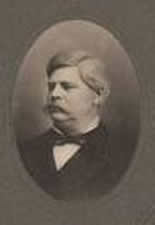
Vance
Mayor Kenan promoted economic development in Wilson
and postwar North Carolina, and in June, 1873 addressed
students at the Wilson Collegiate Institute on the importance
of a practical, industrial education for Southern men. Too long,
he reminded his audience, the South had sent young men
northward to learn the professions and that:
“the times now demanded this should cease to be so, that
our Southland was to built up and developed, rail roads and
factories were to be built and they must be built by Southern
men, and that, in order to do it, the mechanics of the
South must be educated men . . . “
Col. Kenan was keenly aware that the South’s four-year bid for independence was defeated by the industrial and material might
of the North, and that his native section needed to modernize
to protect itself in the future.
A proponent of higher education in North Carolina, Kenan helped
increase public support for the re-constituted University of
North Carolina which had closed its doors in 1871 rather than
be controlled by the carpetbag regime in Raleigh. This effort was
successful and the university re-open its doors in 1873 under
the control of North Carolinians.
In mid-1876 Col. Kenan sought public office again with the
Wilmington Morning Star publishing a personal sketch and stating
that he was “the worthy nominee for Attorney General on the
Democratic Conservative ticket.” The sketch added:
“There is an elevation of character about him and his family
seldom to be found anywhere, and only to be known to be
admired. I would to God that all men, everywhere, who in this
Centennial year aspire to an honored position, we such as
he, for peculation and thievery would know no place in their
hearts, and the people of this distracted country would once
more rejoice in honest constitutional government.”
The writer saw in men Col. Kenan’s character and integrity the
antidote to the venal and corrupt Reconstruction regimes and political
hope in the future of the State. He won the attorney-general race,
saw Zebulon Vance become governor once again, and witnessed
the withdrawal of Northern occupation troops which had
protected the Republican party in North Carolina.
Kenan held the attorney-general’s office for eight years
(1877-1885) and built a home in Raleigh one block from the
Governor’s mansion, was appointed a trustee of the University
in 1883 (and member of its executive committee), and became
president of its Alumni Association.
On 1 March 1886 he was elected Clerk of the North Carolina
Supreme Court, serving in that capacity until his death. Col.
Kenan also served as president of the North Carolina
Bar Association.
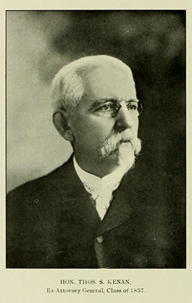
Leaving a Legacy of Public Service and Education
Thomas was instrumental in establishing at the university the
Kenan Fund for acquiring books and other printed materials
relative to Southern culture, and focusing on the War and
Reconstruction. He was also a founding member of the
North Carolina Literary Society.
The last decade of the century saw Col. Kenan continuing his
public service and erecting memorials to Southern veterans of
the former Confederacy in Raleigh and elsewhere. He supported
the movement to erect a Soldiers’ Home in Raleigh for aged
veterans and served as a member of the Confederate
Memorial Association’s executive committee.
In 1895 Kenan contributed a history of his Forty-third Regiment
for the five-volume compilation of North Carolina’s military units
in the War, as well as his experiences as a prisoner at Johnson’s Island.
When the College of Medicine of the University of Virginia decided
to fill its Board of Trustees with distinguished men from the region,
Col. Thomas Kenan was selected to represent his State.
At the laying of the cornerstone for the Confederate Monument at
Raleigh, 22 May 1894, Col. Kenan spoke briefly to the assembled
citizens. He introduced the speaker, Hon. Risden Tyler. Bennett and
former colonel of the Thirteenth North Carolina Regiment
who said in part:
“The South, inspired by lofty ideals of duty and stimulated by
precious faith, has done well in preserving, amidst poverty
and toil, the wholesome truths of that great struggle.
The daughters and grand-daughters of the regiments that
followed the leadership of Lee and Jackson, Branch and
Bragg, upon the crested ridge amid the stormy presence of
Battle – the women of our State have “set up a stone
for a pillar,” to testify to unborn ages
our reverence for our dead.
If the courage of these Confederates, who stepped from their
homes into the army and were soldiers, was admirable, the
principle for which they contended cannot be overstated.
The right of local self-government lay at the very root of struggle
and conflict between the government and the Confederate States. These men had a just cause – they were dutiful sons of
indestructible States. Their actions were worthy of their
day, their achievements were worthy of all time.”
Col. Kenan secured from his wealthy relative and Florida developer
Henry Flagler (who married niece Mary Lily in 1901) a generous
donation toward Richmond’s “Battle Abbey” museum which would
exhibit the artifacts of all the former Confederate States, and highlight
the rich Southern culture within each State’s memorial room.
By 1911 he was feeling the strong effects of old age and the pressure
of his many public commitments. His health declining, Col. Kenan
died in his Raleigh residence two days before Christmas, 1911.
He is buried in that city’s Oakwood Cemetery.
Sources:
Sketch of the Forty-third Regiment, NC Troops, 1895,
Across Fortune’s Tracks, Walter E. Campbell, UNC Press, 1996
Chronicles of the Cape Fear, James Sprunt, 1916
Confederate Colonels, B. S. Allardice, University of Missouri Press, 2008
Biography of Thomas Stephen Kenan, A.M. Fountain, 1988
Prison-Pens of the North, Michael D. Hayes, Colson Printing, 2004
Experiences on Johnson’s Island, H.W. Henry, Confederate Veteran, December 1907
Southern Historical Society Papers, Volume Twenty-two, 1894
©2006 Cape Fear Historical Institute
